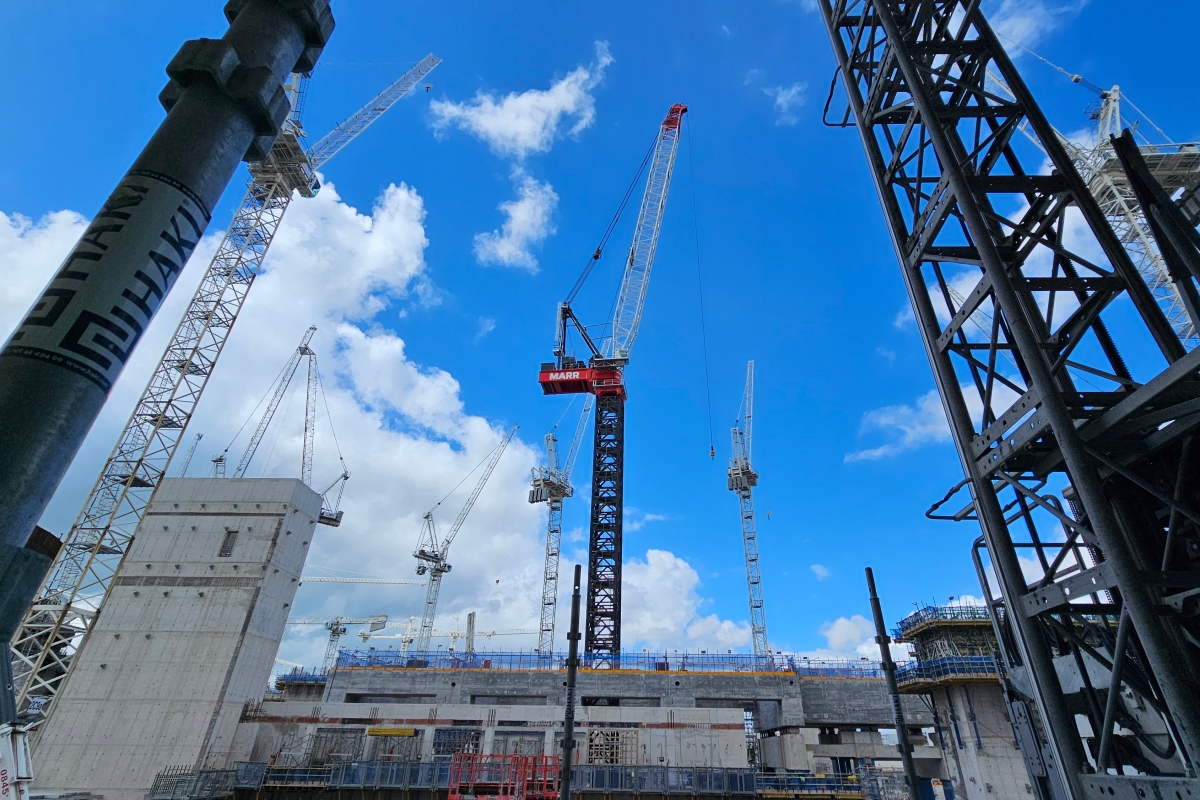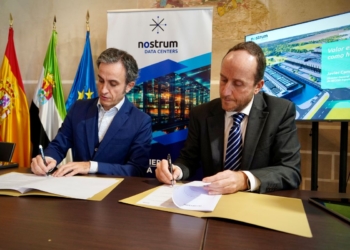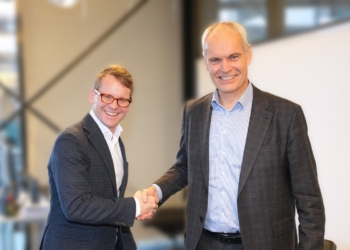‘Cranes key to productivity in data centre construction’
Author: Joe Peck

With companies and consumers increasingly reliant on cloud-based computing and services, data centre construction has moved higher up the agenda across the world.
Recently re-categorised as ‘Critical National Infrastructure’ in the UK, the market is highly competitive and demand for new facilities is high.
However, these projects are very sensitive to risk. Challenges include the highly technical nature of some of the work, which relies on a specialist supply chain, and long lead times for equipment such as servers, computer chips, and backup generators – in some cases, up to two years.
Time is of the essence. Every day of delay during a construction programme can have a multimillion-pound impact in lost income, and project teams can be penalised for falling behind. However, help is at hand from an unexpected source: the cranage provider.
Cutting construction time by half
Marr Contracting, an Australian provider of heavy-lift luffing tower cranes and cranage services, has been working on data centres around the world for several years. Its methodology is helping data centre projects reach completion in half of the average time.
“The first time that I spoke to a client about their data centre project, they told me that they were struggling with the lifting requirements,” explains Simon Marr, Managing Director at Marr Contracting.
“There were lots of heavy precast components and sequencing them correctly alongside other elements of the programme was proving difficult.
“It was a traditional set-up with mobile cranes sitting outside the building structure, which made the site congested and ‘confused.’
“There was a clash between the critical path works of installing the in-ground services and the construction of the main structure, as the required mobile crane locations were hindering the in-ground works and the in-ground works were hindering where the mobile cranes could be placed. This in turn resulted in an extended programme.”
The team at Marr suggested a different approach: to place fewer, yet larger-capacity cranes in strategic locations so that they could service the whole site and allow the in-ground works to proceed concurrently.
By adopting this philosophy, the project was completed in half the time of a typical build. Marr has partnered with the client on every development since, with the latest project completed in just 35 weeks.
“It’s been transformational,” claims Simon. “The solution removes complexity and improves productivity by allowing construction to happen across multiple work fronts. This, in turn, reduces the number of cranes on the project.”
Early engagement is key
Simon believes early engagement is key to achieving productivity and efficiency gains on data centre projects.
He says, “There is often a disconnect between the engineering and planning of a project and how cranes integrate into the project’s construction logic.
“The current approach, where the end-user of the crane issues a list of requirements for a project, with no visibility on the logic behind how these cranes will align with the construction methodology, is flawed.
“It creates a situation where more cranes are usually added to an already congested site to fill the gap that could have been covered by one single tower crane.”
One of the main pressure points on projects that is specific to data centres is the requirements around services.
“The challenge with data centres is that a lot of power and water is needed, which means lots of in-ground services,” continues Simon.
“The ideal would be to build these together, but that’s not possible with a traditional cranage solution because you’re making a compromise on whether you install the in-ground services or whether you delay that work so that the mobile cranes can support the construction of the structure. Ultimately, the programme falls behind.”
“We’ve seen clients try to save money by downsizing the tower crane and putting it in the centre of the server hall. But this hinders the completion of the main structure and delays the internal fit out works.
“Our approach is to use cranes that can do heavier lifts but that take up a smaller area, away from the critical path and outside the building structure. The crane solution should allow the concurrent delivery of critical path works – in turn, making the crane a servant to the project, not the hero.
“With more sites being developed in congested urban areas, particularly new, taller data centres with heavier components, this is going to be more of an issue in the future.”
Thinking big
One of the benefits of early engagement and strategically deploying heavy lift tower cranes is that it opens the door for the constructor to “think big” with their construction methodology.
This appeals to the data centre market as it enables constructors to work to design for manufacturer and assembly (DfMA). By using prefabricated, pre-engineered modules, DfMA aims to allow for the rapid construction and deployment of data centre facilities.
Fewer, heavier lifts should reduce risk and improve safety because more components can be assembled offsite, delivered to the site, and then placed through fewer major crane lifts instead of multiple, smaller lifts.
Simon claims, “By seeking advice from cranage experts early in the bid and design development stage of a project, the project can benefit from lower project costs, improved safety, higher quality, and quicker construction.”








